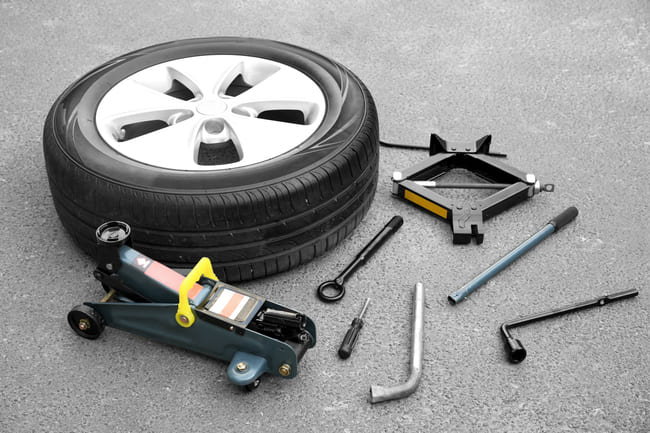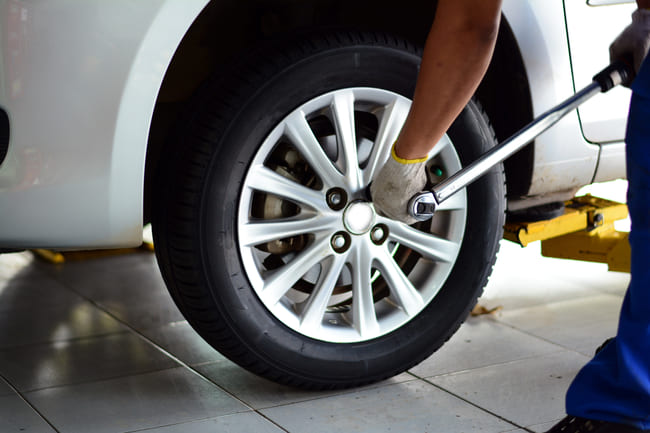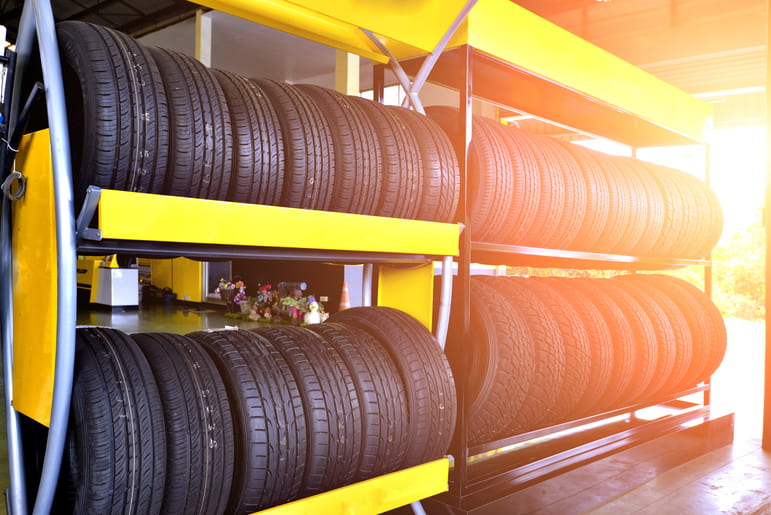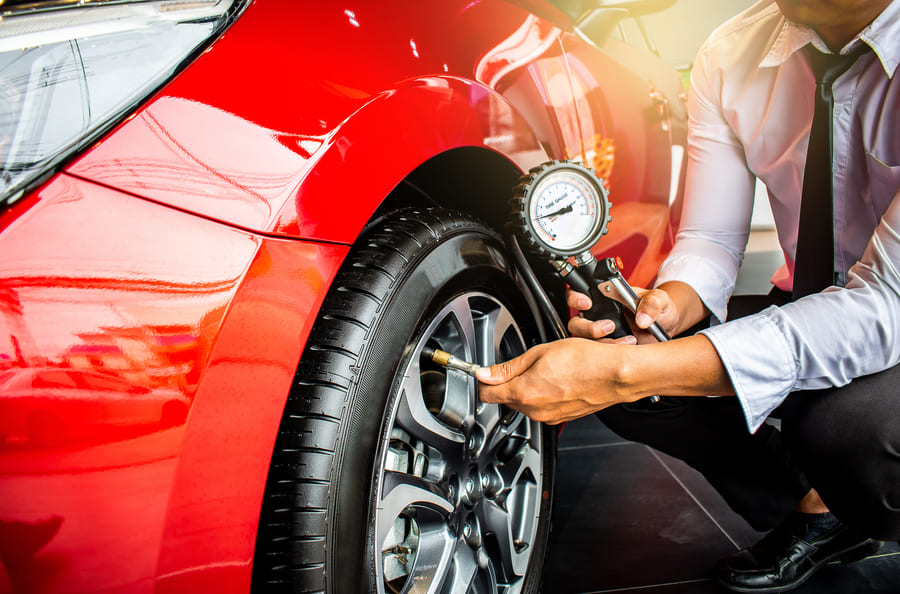
Whether it’s putting on a new set of tyres to suit the season or swapping out a flat on the motorway, changing tyres is an essential skill that every driver should have in their back pocket. You could get it done at the garage, or wait for your breakdown company to help you on the side of the road, but it’s always quicker, cheaper, and often more efficient to be able to do it yourself. It’s going to make you feel great and much more confident too! Here is a step-by-step guide on how to change a tyre yourself and the kinds of tools you’re going to need to get back on the road without hassle.
What tools do you need to change a tyre

Before we get started with changing a tyre, it’s crucial that we have the right equipment to make sure we can swap the tyres safely and efficiently.
You will need the following tools:6 tips for changing tyres yourself
- Find a flat surface and prepare the car.
You should make sure you have a solid, level surface that is going to stop the car from rolling away. You could also block the wheel on the opposite side with a plank or a stone. If you are near a road, park as far from traffic as possible and turn on your hazard warning lights. Avoid trying to change a tyre on soft ground (grass) and hills. Apply the handbrake and put your vehicle in first gear or reverse if it is a manual car, park if it is an automatic. If you’re on a roadside and are changing a flat tyre, make sure you set up your warning signal too, so that approaching drivers know that there is a stationary vehicle and something is wrong. It’s also a good idea to check the spare tyre before you fit it – there’s nothing worse than going to the effort of fitting a new tyre only to realise that it is flat. - Loosen the wheel nuts.
First level off the plastic hubcaps or wheel trim so that the metal wheel nuts are exposed. Using the cross wrench, loosen the wheel nuts by turning counterclockwise. At this stage, you don’t want to make them too loose or remove them completely, just enough so that the resistance is broken. By keeping the wheel on the ground when you first loosen the nuts, you’ll make sure that you’re turning the nuts instead of the wheel. If there is a lot of resistance and you find this difficult, you can use your knee and foot to gain leverage on the cross wrench. - Jack up the car.
The scissors jack is the most common and widely available jack for changing wheels yourself. It uses a screw to move the jack up and down. It’s worth noting that before you decide where to place the jack that many cars have molded plastic along the bottom. If you don’t place the jack in the right spot, it will crack the plastic when you start lifting. Placing a small piece of wood underneath will help to keep this stable too, if you have one to hand.
If you’re not sure about the right place to put the jack, take a look at your vehicle’s manual, but more often than not the best place for the jack is at the side of the car close to the punctured wheel. For most modern unibody cars, there is a small notch or mark just behind the front wheel wells, or in front of the rear wheel wells, where the jack is intended to be placed. For most vans or older cars that have a frame, look to place the jack on one of the beams of the frame just before the front tire or in front of the rear tire.
While it may seem obvious, it’s important to mention that you should NEVER place your hands or legs under the vehicle as it would be incredibly dangerous if the car fell.
Jacking can take a while and patience is key here, so keep going slowly until the car is 10–15cm off the ground or until the wheel you are changing is raised a few centimeters off the ground. As you lift, make sure that the car is stable. If you notice any instability, perhaps because of poor placement of the jack, lower the jack and fix the problem before fully lifting the car. If you notice the jack lifting at an angle or leaning, lower and reposition it so that it can lift straight up. - Remove the wheel nuts and the flat tyre.
Now that the car is elevated, you can begin to remove the wheel nuts. Use the cross wrench again and make sure to keep the nuts close by after they have been removed. Once this is done remove the flat tyre. If the car is old, it is possible that the tyre will stick due to rust. You could try hitting the inside half of the tire with a rubber mallet to loosen the tire, or use the spare tire to hit the outside half. If you wanted to clean the inside with your brush, now is the time to do it, before fitting the new tyre.

- Mount the new tyre on the wheel.
Centre the spare or replacement tyre on the wheel studs (also known as hub bolts) where the wheel nuts were. Be sure to install the spare tire the correct way and not backwards. The valve stem of a doughnut tire should face outwards, away from the vehicle. If your vehicle uses acorn-style wheel nuts, it is easy to make a mistake and put these on backwards. Be sure the thinner part of the wheel nut is facing the wheel when tightening it.
Tighten by hand as much as possible and then use the cross wrench to tighten them so that they are firm and don’t slip. Don’t fully tighten them yet, however, as we will wait until the car is back on the ground. - Lower the car and tighten the bolts.
Once the wheel is back on the car you can begin to use the jack to lower it back down to the ground. Once again, be patient and take your time, though it should be a little easier than raising the car up. Remove the jack from underneath the car when it is back on the ground and then start to tighten the wheel nuts.
It’s important to make sure equal torque is applied to all wheel nuts. Using the cross wrench, tighten the nuts as much as possible in a star pattern – this means starting by tightening the nut at the bottom, then tightening the stud opposite, then moving back to an untightened stud opposite this one and so on, until they are all tight. This ensures the tyre is balanced and you can check this using your torque wrench. Now the job is done and you have changed a car tyre yourself!








Comment